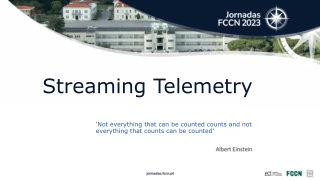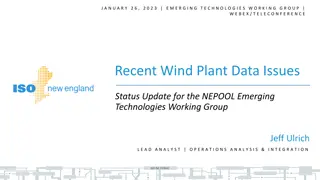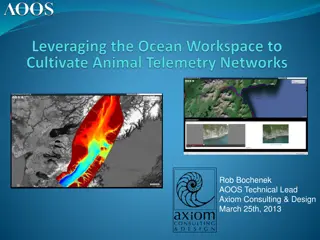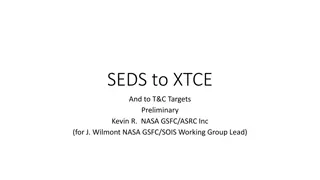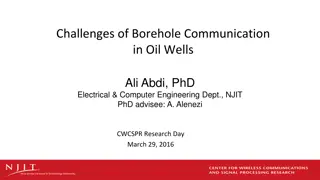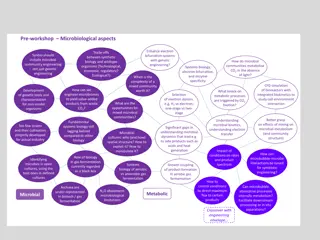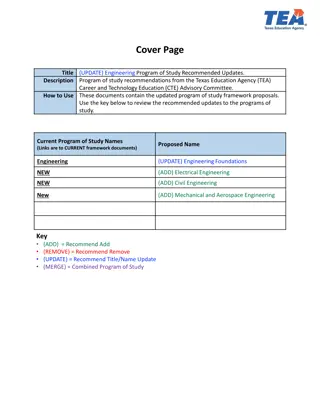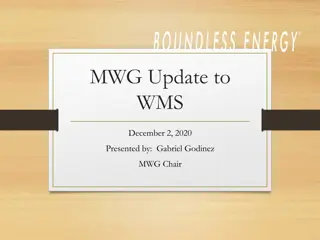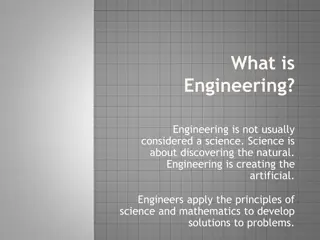Telemetry Systems in Engineering
Telemetry is the process of measuring an object's characteristics and transmitting the results to a distant station for analysis. It involves components like sensors, transducers, and amplifiers to collect and transfer data. Telemetry systems typically consist of Airborne and Ground components. Transducers play a crucial role in converting physical parameters into electrical signals, which are then amplified for better transmission. This overview provides insights into the technology and components involved in telemetry systems.
Download Presentation

Please find below an Image/Link to download the presentation.
The content on the website is provided AS IS for your information and personal use only. It may not be sold, licensed, or shared on other websites without obtaining consent from the author.If you encounter any issues during the download, it is possible that the publisher has removed the file from their server.
You are allowed to download the files provided on this website for personal or commercial use, subject to the condition that they are used lawfully. All files are the property of their respective owners.
The content on the website is provided AS IS for your information and personal use only. It may not be sold, licensed, or shared on other websites without obtaining consent from the author.
E N D
Presentation Transcript
INTRODUCTION What Is Telemetry? What Is Telemetry? Telemetry is the process by which an object s characteristics are measured (such as velocity of an aircraft), and the results transmitted to a distant station where they are displayed, recorded, and analyzed. Several Good Definitions: The measurement of some quantity with the aid of intermediate means which permit the measurement to be interpreted at a distance from the primary detector. The process that measures a quantity and then transfers the measurement data to a remote location to be recorded, displayed, or to control a process. [Streich, p 1]. FCC Definition: "use of telecommunication for automatically indicating or recording measurements at a distance from the measuring instrument." [Horan, p 1] Strictly speaking, "telemetry" is the information that is collected, and "telemetering" is the process that collects and transfers the information. [Horan, p 1]
TELEMETRY SYSTEMS OVERVIEW TELEMETRY SYSTEMS OVERVIEW A telemetering system includes all components that are used to measure, transfer, and analyze the data. A telemetry system is often viewed as two components, the Airborne System and the Ground System.
Data acquisition begins when sensors (transducers) measure the amount of a physical attribute and transform the measurement to an engineering unit value. Sensors attached to signal conditioners provide power for the sensors to operate or modify signals for compatibility with the next stage of acquisition. Since maintaining a separate path for each source is cumbersome and costly, a multiplexer (historically known as a commutator) is employed.
TRANSDUCER TRANSDUCER Transducers are used to transform a physical parameter into an electrical signal. There are several major classifications of transducers [Horan, p 15, 16]: Optical or Visual Pressure, Strain, Force Environmental Position
AMPLIFIER AMPLIFIER An instrument amplifier is used to amplify the (usually) very small electrical signal that is generated by a transducer into a higher intensity signal that is better suited for transmission.
MULTIPLEXER MULTIPLEXER The multiplexer is used to combine several measurement signals into a single signal to be transmitted to the base station. There are two primary types of multiplexing-- Time Division Multiplexing (TDM) and Frequency Division Multiplexing (FDM)
PULSE CODE MODULATOR PULSE CODE MODULATOR PCM encodes the amplitude of the multiplexer output in digital form and then transmits that signal. Ability to add error correction codes into the data stream to correct errors that may occur during transmission.
TRANSMITTER TRANSMITTER Transmits the signal that is generated by the multiplexer. The transmission can take place via several different techniques depending on the transmission medium.

 undefined
undefined


